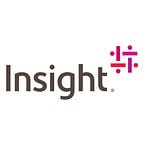Past the Tipping Point of AI in Healthcare
By Matt Jackson and David Le Penske
Many of us worry that AI in healthcare means more of our personal data is being gathered and analyzed by providers, thereby creating security risks. Worse, we may be concerned that AI is going to replace the human knowledge and expertise of healthcare practitioners. That’s not the future we see. We anticipate AI will continue to enhance the healthcare experience and enable innovation among professionals to improve outcomes and make life easier for patients in need of care.
In our last post, we discussed some early, practical applications for AI in healthcare, and how we’ve only just begun to scratch the surface of possibilities. But what does the future hold? Where could AI have the biggest impact for healthcare providers — and patients, as well?
Here are three major trends we expect to see in the years to come.
Autonomous Equipment
As the Internet of Things continues to spread to all areas of our lives — from manufacturing to our own homes — it is likely that we’ll see healthcare facilities find more ways to leverage it, too.
We may see in the near future the development of autonomous equipment, such as vitals-monitoring equipment, lab carts and crash carts, that can be at the right place and the right time, without requiring a professional to manually retrieve it. In urgent situations, this might make all the difference between life and death. In more routine settings, it could improve efficiency and allow practitioners to see more patients in less time without sacrificing quality of care.
On top of all that, IoT-connected equipment could help gather intelligence to better understand where and how that equipment is being used, helping to optimize its placement and find efficiencies. This can only help the cost of healthcare, considering equipment is the second greatest expense in the industry after labor.
The ultimate benefit is that doctors, nurses and other healthcare professionals will spend less time running back and forth to find the equipment they need, and more time taking care of us.
The Augmented Office
Another area of healthcare that can be a resource drain is administration. Right now, a significant amount of manpower — from both administrative and healthcare professionals — is required to manage the onerous paperwork of billing, updating records, planning care and running the day-to-day of the facility.
AI may be able to reduce the amount of time they have to spend on these functions, in addition to aggregating information to improve patient care. For example, a template for machine learning and predictive analytics may be able to help doctors identify comorbidities that they should be evaluating in their patients (i.e., “if patient has X condition, it’s possible that they may have Y and Z as well”).
From the hospital administration perspective, AI could help billing departments double-check their records and find where information may be missing. This application of AI supplements (not replaces!) human knowledge to help facilities reduce noise, overhead and operational costs to enable a more personalized care experience for patients.
An added benefit of developing AI-powered offices? Knowledge sharing. Healthcare facilities aren’t looking for a competitive advantage over each other. The templates and data models they use can be shared as open source, allowing them to exchange knowledge and share best practices.
Immersive Patient Experiences
AI has the potential to help healthcare facilities synthesize data and optimize patient management, further enabling personalized, end-to-end care. Some examples of where AI, like cognitive services, can help facilities include scheduling (moving patients through the ER more quickly), improving the continuum of care (helping to identify where patients may require longer-term care and treatment after they leave the hospital) and capturing/processing documentation (keeping patient and billing information organized).
The net effect of using a bot instead of a human for these types of functions is, again, that professionals can focus on their patients instead of paperwork.
The Limit Does Not Exist
Finding uses for AI in healthcare is like peeling an onion. Even the applications we’ve discussed here are only a layer or two deeper from where we already are, and all of these require interaction from humans to fully optimize their usefulness. In the decades to come, we will likely see even more innovations that could revolutionize the way we approach healthcare.
That’s the most exciting part about AI: It’s always learning and, along the way, we do too. It is possible that, in the next decade or two, we could harness the power of quantum computing to help doctors diagnose and develop a completely customized treatment plan for cancer.
And if that sounds like the pinnacle of AI in healthcare, imagine what we might be able to do long into the future. It may not be conceivable to us yet, but with every innovation we find another opportunity to make life better for everyone.
Matt Jackson leads Insight’s Digital Innovation team in the design of enterprise software solutions, focusing on modern enterprise applications and security architectures. His passion goes beyond achieving operational excellence and deeper into transforming organizations. Read more thoughts from Matt.
David Le Penske is the director of healthcare and life sciences for the Digital Innovation team at Insight. With more than 15 years of experience in the healthcare IT space, including digital innovation, cloud and software as a service, he specializes in strategic planning, execution and business development.
